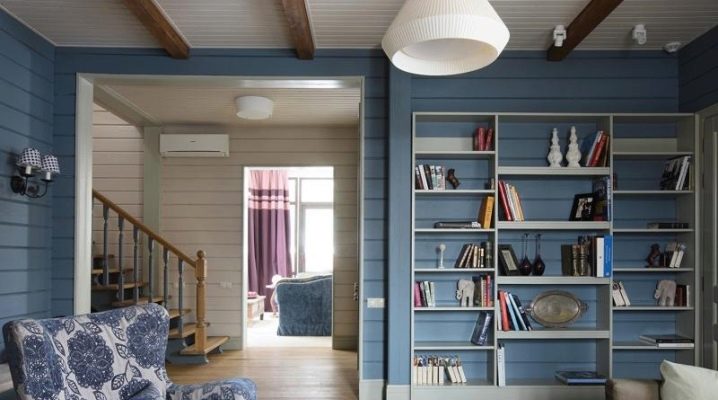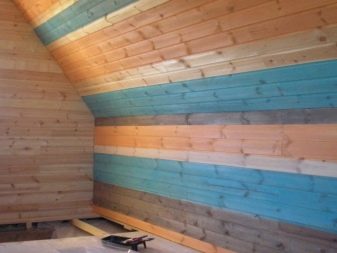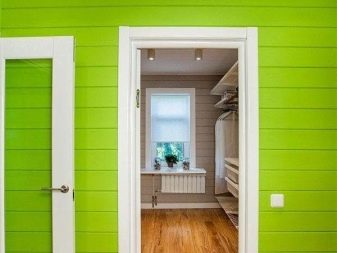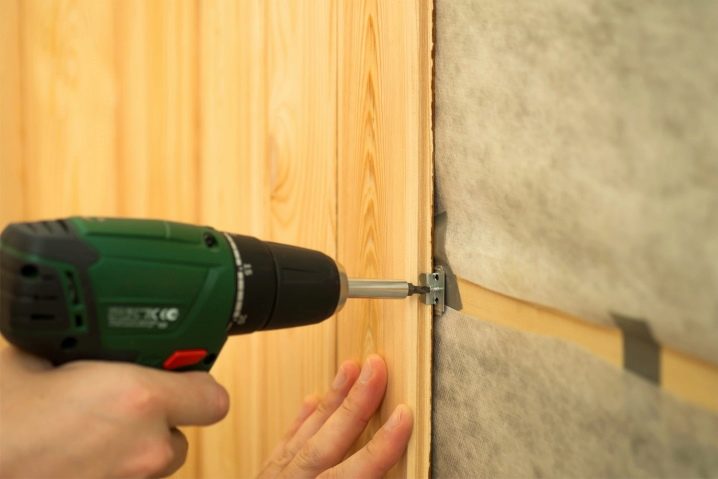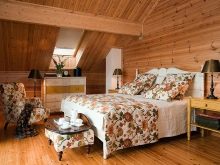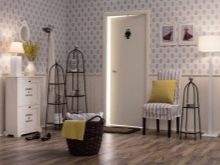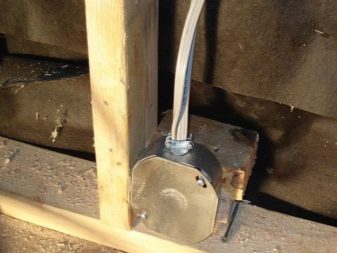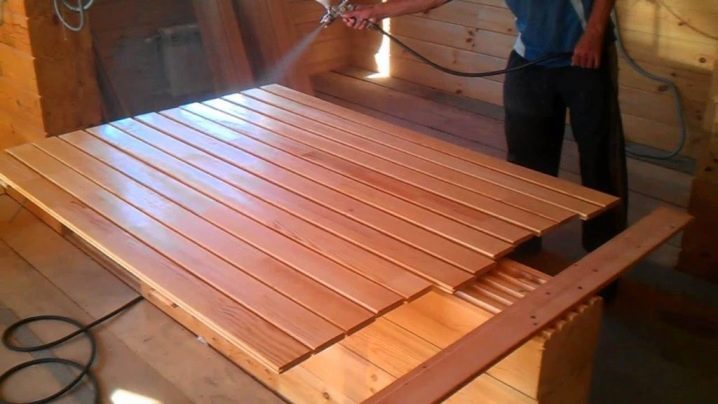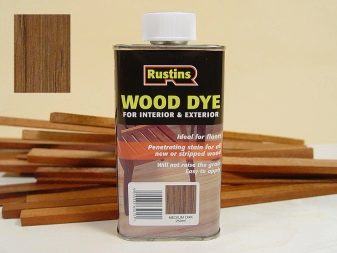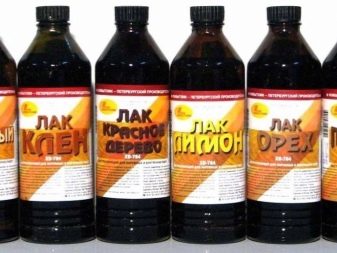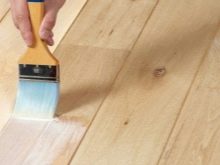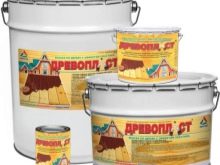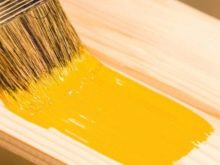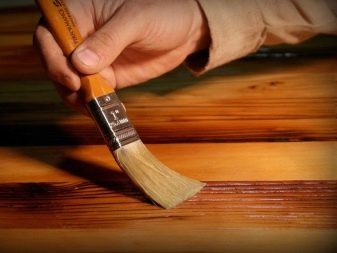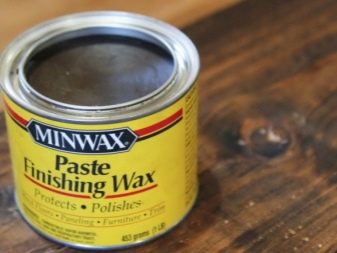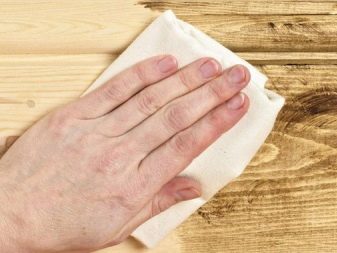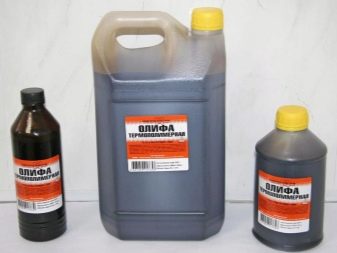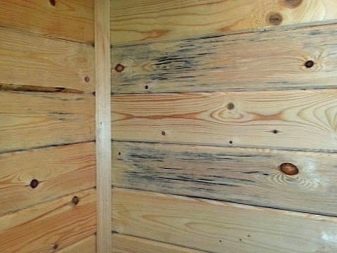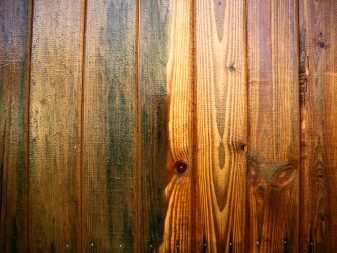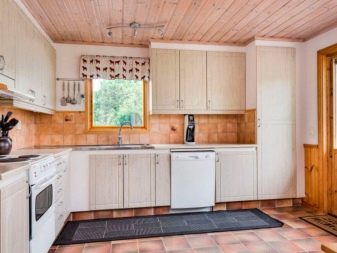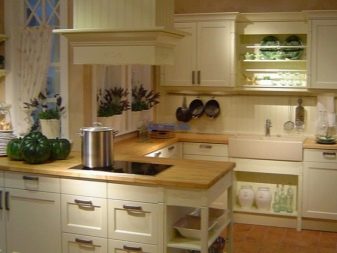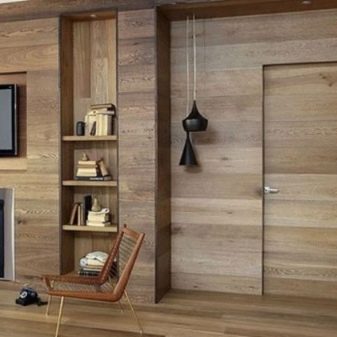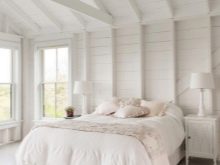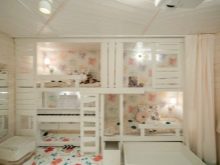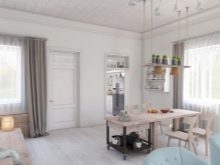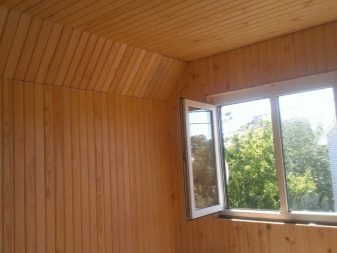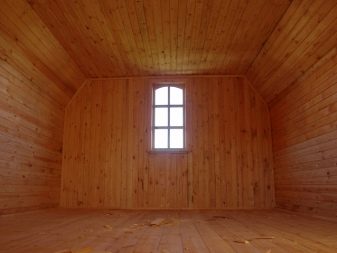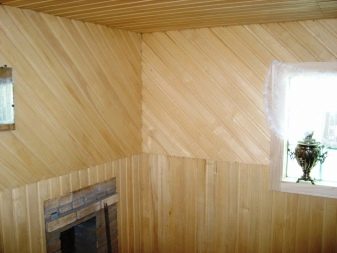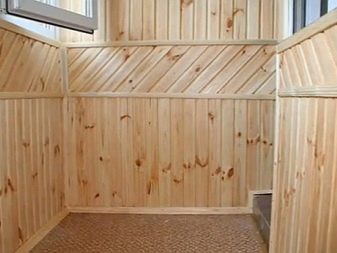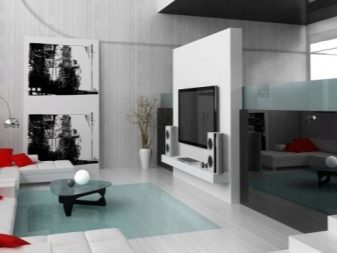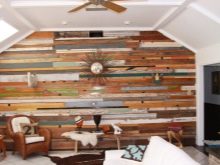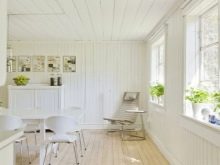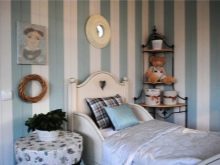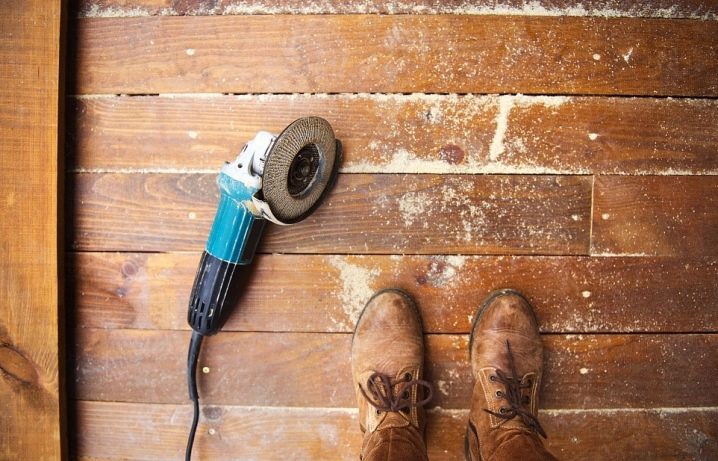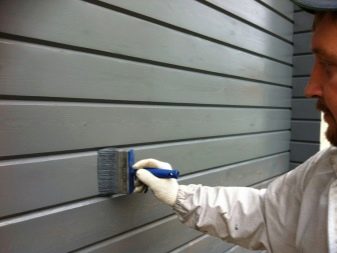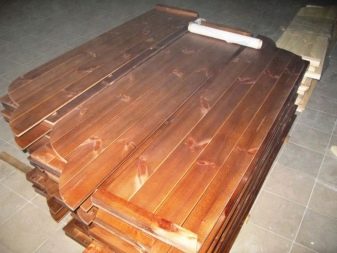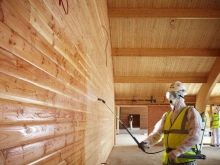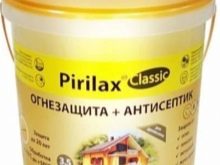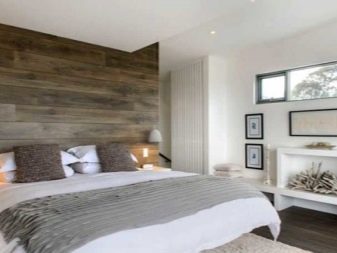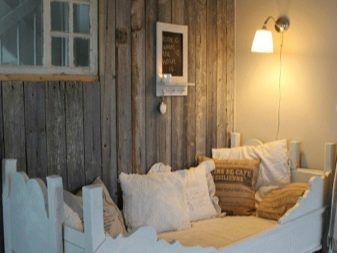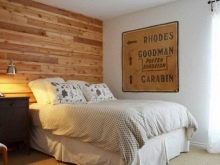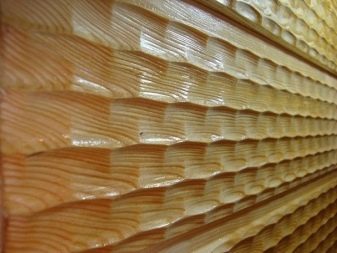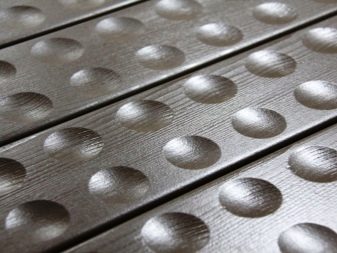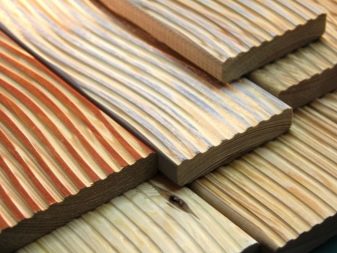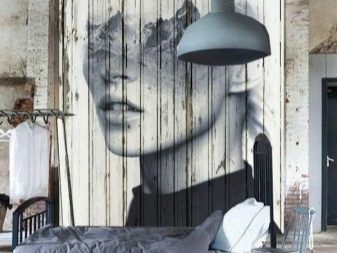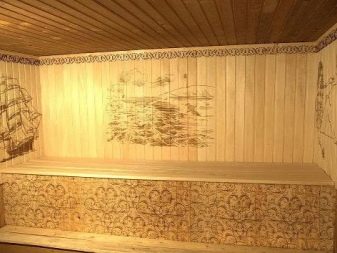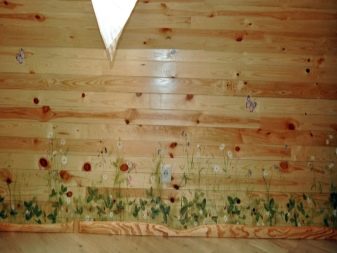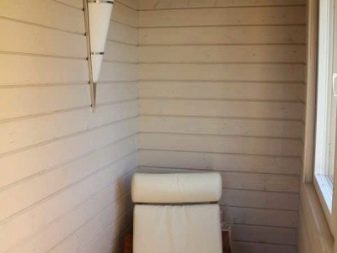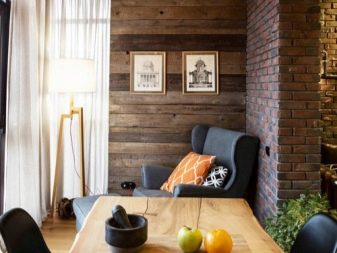Painting lining inside the house in different colors: original ideas
If you are bored with paint and wallpaper in the walls and you need to come up with new and fresh solutions, then you should pay attention to the natural and practical trend in the interior - wooden panels. The most popular option is lining - it can have a smooth, rough or wavy surface and is perfect for wall decoration in a country house or bath.
Special features
Lining can be used to create a modern interior in a panel apartment, as well as when decorating balconies, loggias and open terraces.
Wooden lining has many advantages:
- environmentally friendly material;
- adjustment of the visual geometry of the room;
- simple and quick installation;
- strength and resistance to mechanical damage;
- no need to additionally prepare walls and ceilings before installing the wall panel;
- durability and practicality;
- it is perfectly combined with other natural and artificial materials: stone, tile, textiles, leather, wallpaper;
- hides the flaws of the walls and floors;
- allows you to hide wiring and other communications;
- is an excellent heat and sound insulating material;
- It is possible to change the color and design of the walls more than once.
The material also has its drawbacks. The main disadvantage is the high cost and a decent load on the wall. It should also be borne in mind that wood is an environmentally friendly material, but it is susceptible to rotting, so lining requires proper care and maintenance. First of all, boards need to be treated with paint and varnish products and other special compositions for wood, as they have protective properties and help prevent mechanical defects and other damage.
Types of paints
It often happens that homeowners get tired of the natural wood shades in the interior and want to update the color of the walls by painting the wall paneling.All wood products are divided into two types: decorative and protective. Some are designed for interior decoration, the second - to increase the service life.
All funds for the tree can be divided into several categories, each of which solves separate problems.
- Protective equipment Used in both exterior and interior decoration. From the name of such tools it is clear that they must be used to protect the surface from different types of effects: mold, moisture and ultraviolet radiation. Such compounds have several degrees of protection and slow down the aging process of the material. For example, UV protectors preserve natural woody patterns and fight against discoloration and darkening. Such compounds must be used to protect the wall paneling on the balcony, terrace or any other areas exposed to direct sunlight. When processing a wooden surface, it is necessary to apply a small layer of product - for this you can use a wet brush.
- Toning agents and stains. These substances form a thin layer on the surface and give it a darker shade.Such compounds do not have protective properties. They are chosen when it is necessary that the tree "breathed". The structure of the tinting agent itself may be weakly or highly pigmented: the weaker the composition, the more pronounced the woody pattern remains. Thus it is possible to adjust the degree of painting the surface. The surface treated with stain must be varnished, otherwise the boards will appear dirty.
- Varnish This substance is used in the processing of wood inside the house. It can make the surface matte, semi-matte or glossy, as well as give a pigmented color. If to mix a varnish with a koper, then the structure will receive a uniform shade which can be put in one layer. But experts recommend applying the first layer of transparent, and then add coloring pigments. Water-based varnishes form a thin film, but at the same time dirt and dust are not absorbed. Acrylic varnishes are considered the most harmless and perform two functions at once: protective and decorative. Also in the composition of some varnishes manufacturers add protective components from ultraviolet radiation. Similar means are recommended to be used at the summer dacha or in a bath.
- Paint. This composition has a more dense texture, through which the natural woody pattern is not visible. The material protects the surface from mechanical factors, fungi, insects, sunlight, chemicals, moisture and fire. The paint is divided into many groups and is latex, oil and acrylic. Before painting, experts advise to use a primer or a colorless varnish for wood, which will allow to get an even and smooth shade. Just as with water-based paint, when applied, it retains the textured pattern and does not paint over it with a dense layer, since at the same time some areas may appear unpainted or will have spots. This is a completely natural reaction of wood, since the porous surface does not always absorb paint evenly.
- Butter. This transparent or pigmented substance is quickly absorbed into the tree structure and does not form a film on the surface. Wood gets a matte or slightly shiny finish. At the same time, the oil provides protection against the absorption of dirt, moisture, dust and fungal damage. Pigmented formulations help emphasize natural woody texture and texture.
- Wax based products. They are a traditional and effective way to protect wood and, moreover, an excellent substitute for varnish. Manufacturers offer wax in three versions: solid, liquid and water. The last two are ready to be applied, and the solid wax must be heated to a liquid state according to the instructions before use. But before that, the wood must be prepared and primed in advance, otherwise the wax may lie unevenly.
- Lyphea. This composition has recently lost its popularity. Initially, the linseed oil gives the tree a pleasant golden hue, but after 2-3 years the surface darkens and begins to stick. Modern manufacturers offer mixed compositions for finishing wooden surfaces both outside and inside the house. It is possible to distinguish impregnations with a toning effect and paints with protective characteristics and oils that have wax in their composition.
Design
Many homeowners prefer not to paint the wall paneling and to preserve the natural pattern. But to extend the original appearance, the tree is still worth processing, otherwise the walls may darken or get a blue tint.To get rid of the gray tint on the tree, you first need to sand the top layer, and then treat the surface to protect it from the sun's rays.
It will be more difficult to bring out a blue shade - for this it is necessary to use biological agents. Chlorine and active oxygen will help to cope with the task. After processing, the surface should be impregnated with a protective composition, and then painted with a dense or translucent paint.
Natural wood shade does not harmoniously complement all interiors, so the walls can be painted. A large selection of coloring methods allows you to create an exclusive coating. To do this, it is important to choose the right color paint. Do not forget about the simple rules: light shades visually expand the space, and dark ones, on the contrary, make the room smaller.
Below are a few recommendations and tips to help you choose the right color.
- The interior of the kitchen looks great warm and soothing shades: yellow, orange, pink and peach.
- The living room looks great honey-golden color in combination with natural wood pattern.The interior can be diluted with light shades or bright and eye-catching colors.
- For the cabinet, you can choose natural wood colors. In this case, the oak tree looks great, but at the same time the lighting should be well thought out in the room. Also cool tones will help to tune in to the working mood.
- In the bedroom, it is better to use wood shades or light and neutral colors. White color also looks great when decorating walls in the bedroom.
- In the nursery, you can use any color, but psychologists advise to give up bright and saturated colors - it is better to choose calm and moderately bright shades. They will not only create a special playful mood, but also help the child relax and tune in to sleep and rest.
- Painted gray and blue lining will create a feeling of dampness and cold, so these shades are wiser to use in sunny rooms.
The paneling can be mounted in various ways.
- Vertically. Allows you to visually lift the ceiling. This technique is especially good to use in combination with light shades.
- Horizontally. Helps to visually stretch the wall and create the effect of expanded space.
- Diagonally. It will create a special dynamics in the interior and allow you to make a spectacular emphasis on the wall or ceiling.
- Alternating. Will create a special charm with a simple technique. For example, you can draw on the wall various figures: herringbone, steps and other combinations that will allow you to create a fantasy homeowner.
Style
When choosing a coating for lining, it is important, first of all, to focus on the style and the general idea of the design that needs to be created. Impregnation and varnishes are suitable in case you need to preserve the natural woody pattern. Old-fashioned wood shade is perfect for country style or Provence.
Classic English style is impossible to imagine without the use of wood. To recreate a unique and refined style, you can use the wall paneling, which must be installed from the bottom up to one third or middle of the wall, and the upper part can be decorated with wallpaper or paint.
The wall paneling can harmoniously fit into the modern and fashionable hi-tech style, but for this it is necessary to carry out works on covering the walls with paint with metal particles or mother-of-pearl.
Light shades of wood can be perfectly combined with an attractive eco style.The purity and preservation of the natural pattern in combination with bright greens look appropriate and harmonious in the city apartment and in the country cottage.
For Scandinavian style, you can also use clapboardbut in this case all the boards should be painted white.
In some cases it is appropriate to combine several colors when painting a single wall. For example, the lower part can be covered with a dark shade, and the top - light, and you can alternate two different colors to highlight horizontal or vertical stripes. It is worth taking care that the colors do not merge on the border of different colors. To do this, you must use masking tape and thin brushes - then you can turn a simple wall into a real art object.
How to paint?
It is possible to paint lining inside the house in any color. To do this, you can use any type of paint - in this case, everything depends on the decorative requirements and features of the room.
Below is a step-by-step instruction on painting lining your own hands.
- Each plate is checked and sorted. Uneven, cracked or curved lining is sent for processing, and parts that are unsuitable for finishing are used to test color or varnish.
- After sorting, the boards are cleaned of dirt and polished with a special machine. If there is no such tool at hand, you can use the available tools: a wooden bar with sandpaper.
- Primer and protective agents are applied with a spray gun or roller.
- In a damp and unheated room, experts recommend using only wood treated on all sides so that the material does not lose its original appearance. After complete drying, you can proceed to the decorative finish: coating with paint or varnish.
- To obtain the best effect in the room, designers strongly recommend to process every detail in turn. To do this, you should polish, paint and dry all the planks and only then proceed to the installation.
- The coating must be applied with a brush or roller along the central part of the wall panel for the entire length. The paint is carefully ground and shaded to obtain a smooth uniform shade. To do this, you need two brushes: medium thickness and narrow format. The painted surface must be completely dry, so after that the boards are laid aside for a few minutes.
- After complete drying, you can additionally repeat the step of grinding the surface. Then one or more layers of paint is applied - it all depends on the effect you want to get. Paint applied by layers lasts longer than one thick layer, but the latter should be as thin as possible. Then the lining is again sent to dry.
- If you paint the finished surface, then between the boards will remain raw areas, so good paint over the joints will not succeed. This method of finishing is valid only in the case of a color update.
- Dyeing old lining is a laborious process that requires proper preparation. If in some places on the walls the paint has broken away, then you need to get rid of it. To do this, with the help of a building hair dryer, you should heat the wall surface and remove the top varnished or painted layer. After that, the wall paneling must be ground and re-primed.
Over time, any protective coating loses its properties.therefore, periodically the boards need to be re-impregnated with flame retardants and bactericidal agents, as well as additionally covering the surface with various varnishes.Anti-foam is used to protect the wood from fire, the service life of the coating is up to 5 years, therefore during this period it is necessary to additionally treat the surface with a tool.
During the initial application, experts advise additionally, for example, to use a small part of the same wood. The composition is applied to the surface in two layers with a brush or spray. After complete drying, the treated part of the plate used for the sample must be set on fire - the surface should not burn and smolder, and after 30 seconds it should turn black and charred. Bactericidal compounds will help to avoid infection with the fungus and fight the existing mold.
Beautiful examples
Modern designers offer a large selection of practical and innovative solutions. Lining looks great not only in the classic interior of a country house, but also in a modern bedroom. An excellent example of a combination of natural woodwork with light smooth walls can be given.
Wall cladding can be made not only with cuts and boards, but also with wooden mosaics.
Also interesting and unusually looks a combination of different thickness of the boards.For example, you can clearly see how thin plates are inserted between the wide boards on the wall in the bedroom, and all the boards have different shades.
Wall paneling in the interior can have a different surface and texture. For example, the option with the waves on the wall - relief can be further emphasized in color.
On the wall in the nursery, you can safely draw any characters or heroes. Such murals will look very original and will definitely appeal to children. Only the finishing touch must necessarily be a coating of colorless varnish or paint - this will protect the image from damage and abrasion.
Original drawings can be applied to the walls not only in the children's room - unusual and ambiguous paintings on the wall will allow you to turn the bedroom into a real art object.
If it is decided to use the wall paneling on a small balcony, then the boards should be filled horizontally. This simple technique will visually expand the space, especially if light and neutral shades are used.
When designing the interior in loft style, you need to choose rough and unpolished boards - they will perfectly complement the industrial industrial interior.
For more information about the process of painting lining described in the video.
